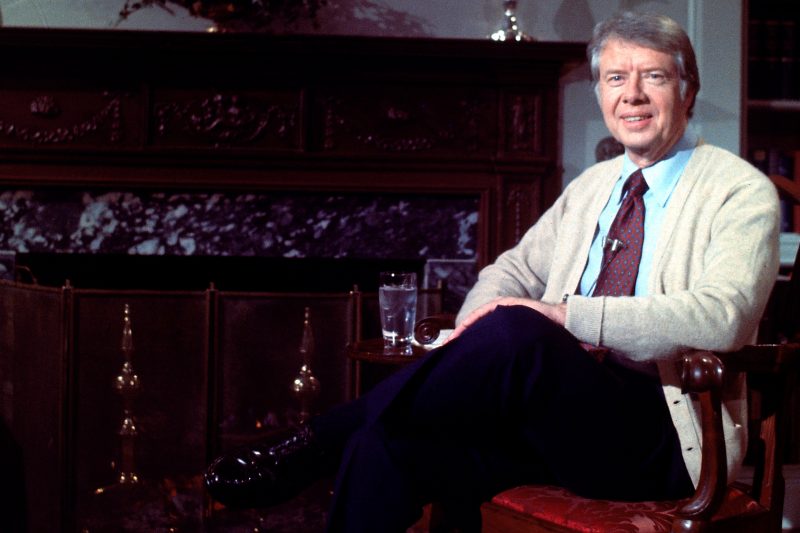In the winter of 1977, soon after becoming President of the United States, Jimmy Carter made a seemingly innocuous decision that would resonate through the years and become a focal point for criticism from his opponents. In an attempt to set an example of energy conservation during a time of oil crisis, Carter opted to turn down the White House thermostat and was famously photographed wearing a cardigan while addressing the nation on television.
This simple act of wearing a sweater, intended to promote energy efficiency and responsible energy consumption, ended up sparking criticism and backlash from Republicans that lasted well beyond Carter’s presidency. The infamous moment came to symbolize the broader ideological differences between the two political parties, with Carter’s emphasis on personal responsibility and conservation clashing with the Republican emphasis on individual freedom and minimal government intervention.
For many Republicans, Carter’s sweater became a symbol of what they saw as government overreach and excessive regulation in the name of environmentalism. Critics accused Carter of being out of touch with the needs and desires of the American people, portraying him as a well-meaning but misguided leader who was disconnected from the realities of everyday life.
The backlash against Carter’s sweater also reflected a deeper cultural divide in American society at the time. The 1970s were a period of significant social and political upheaval, with debates over energy policy, environmental protection, and government regulation taking center stage. Carter’s decision to wear a sweater and promote energy conservation tapped into these larger debates, fueling intense opposition from those who feared that his policies would lead to government intrusion into their personal lives.
Despite the backlash he faced, Carter remained committed to his principles and continued to advocate for energy conservation and environmental protection throughout his presidency and beyond. His legacy as a champion of sustainable energy policies remains a key part of his presidency, even as his opponents continue to use the image of the sweater to criticize his approach to governance.
In the end, Jimmy Carter’s decision to wear a sweater may have been a simple gesture, but it had a lasting impact that extended far beyond the confines of the White House. The image of the sweater remains a potent symbol of the ideological divisions that defined American politics in the late 20th century, reminding us of the importance of understanding and respecting differing perspectives in the pursuit of a more sustainable future.

